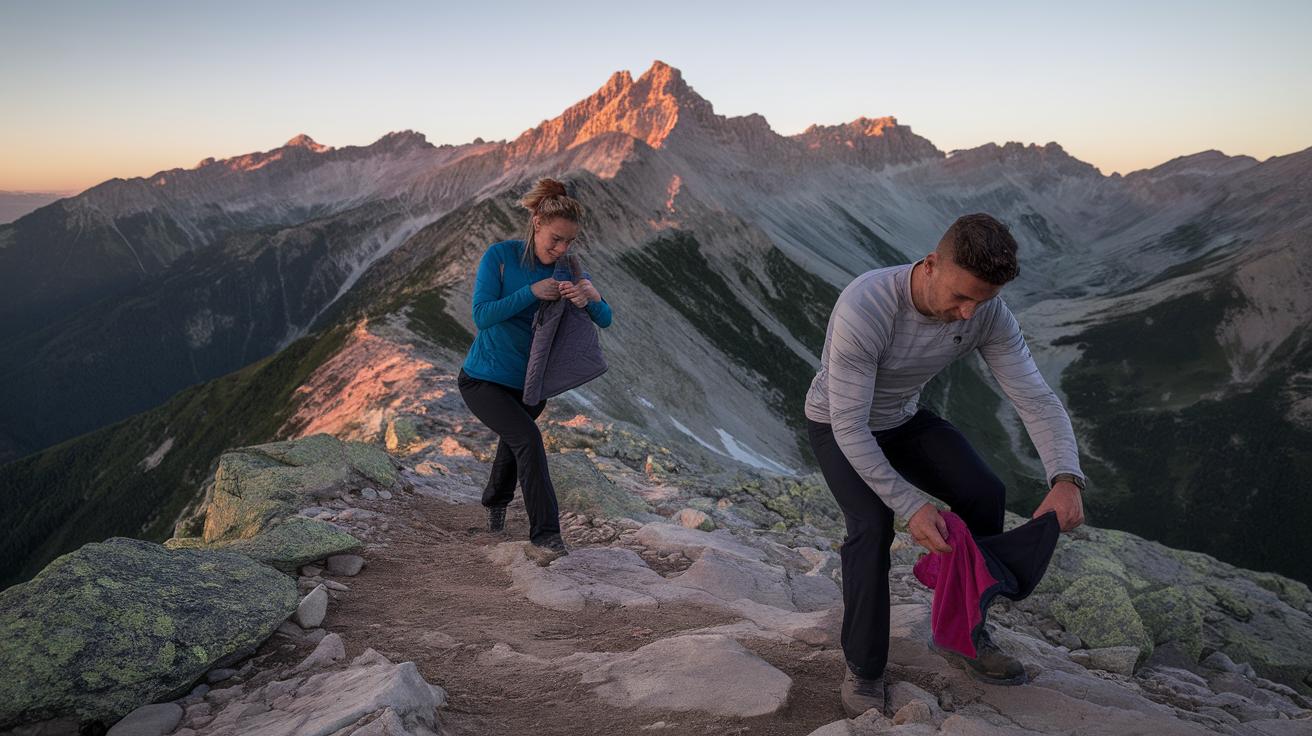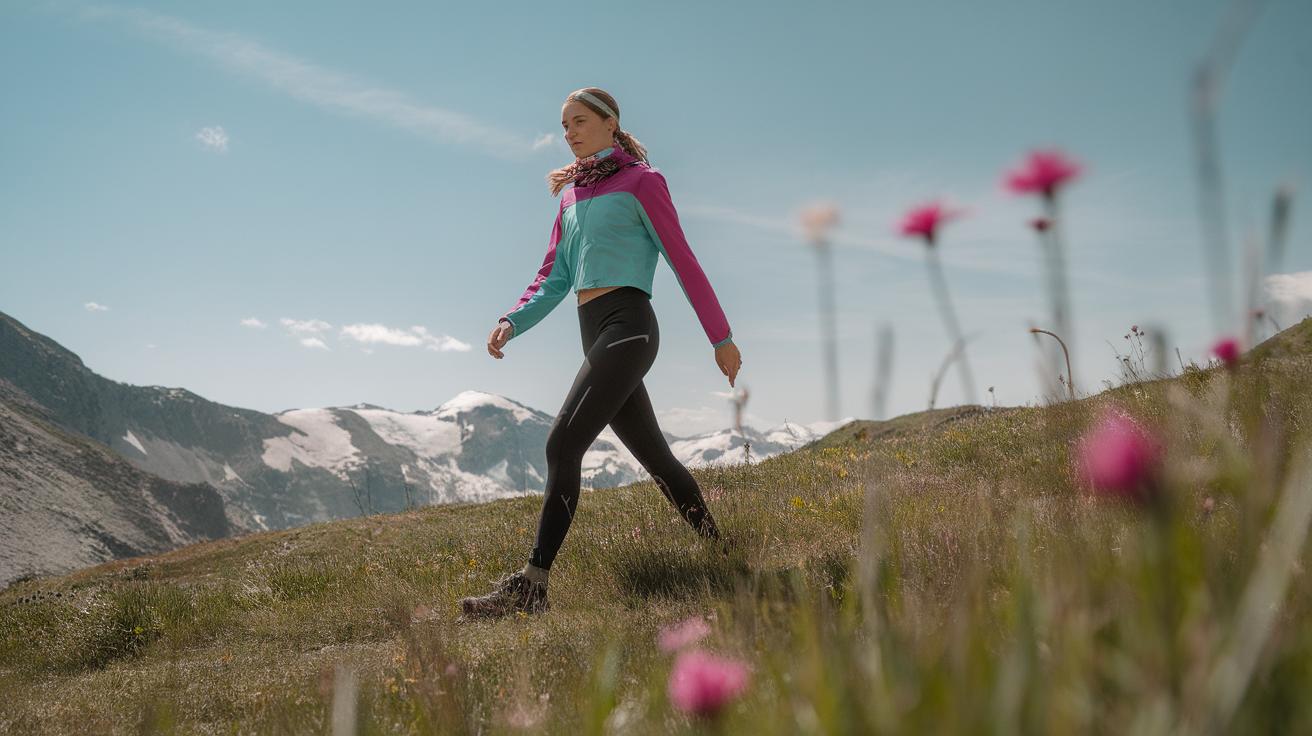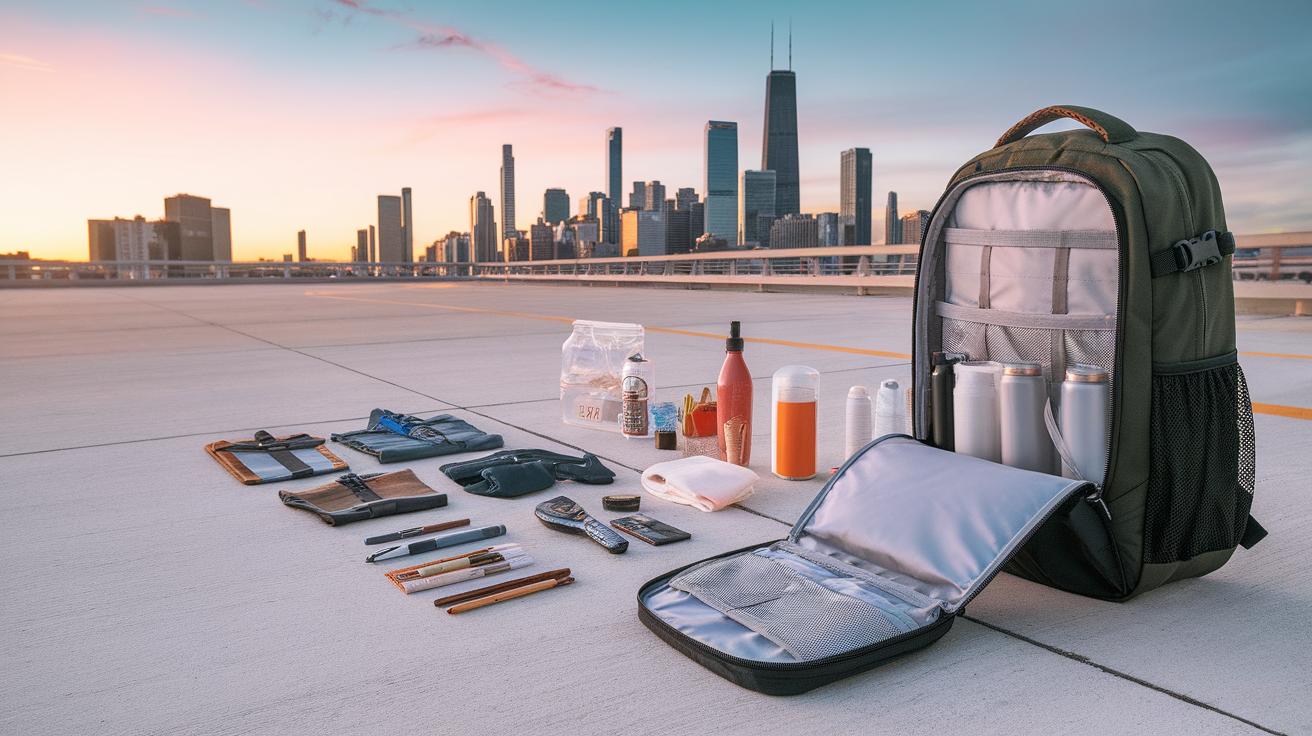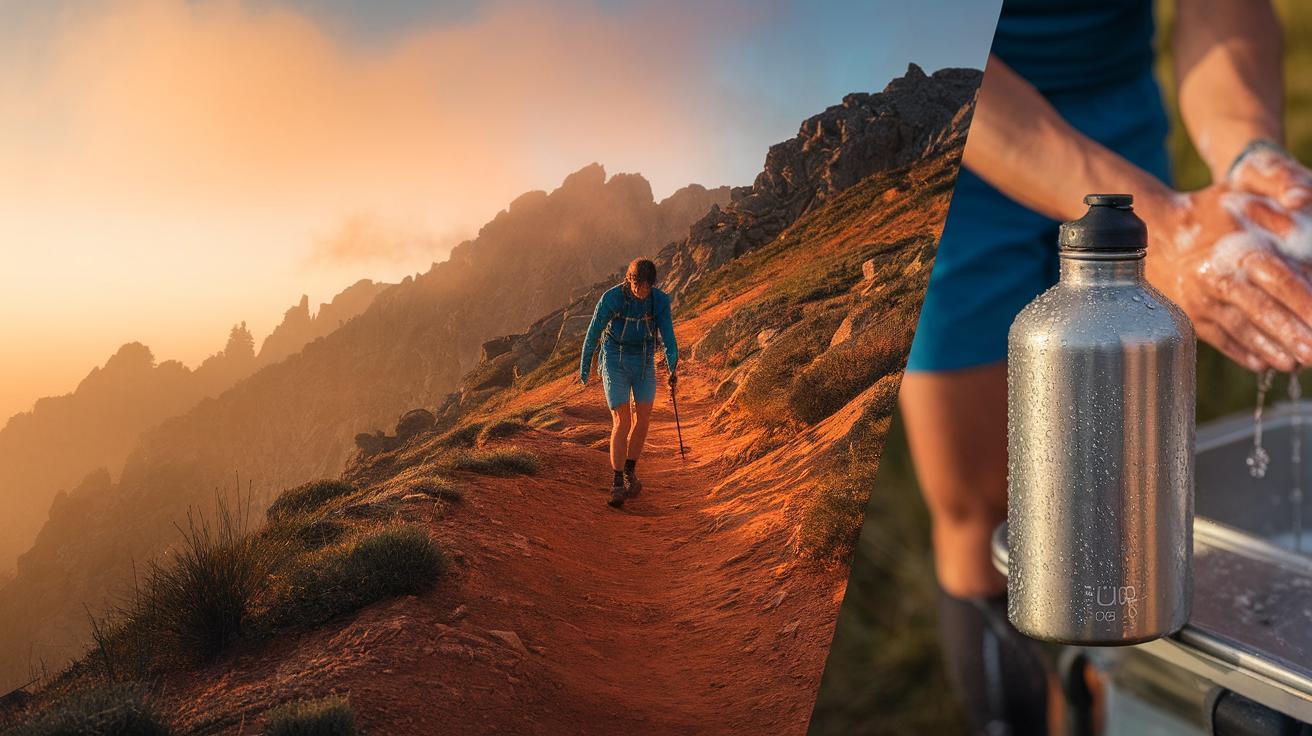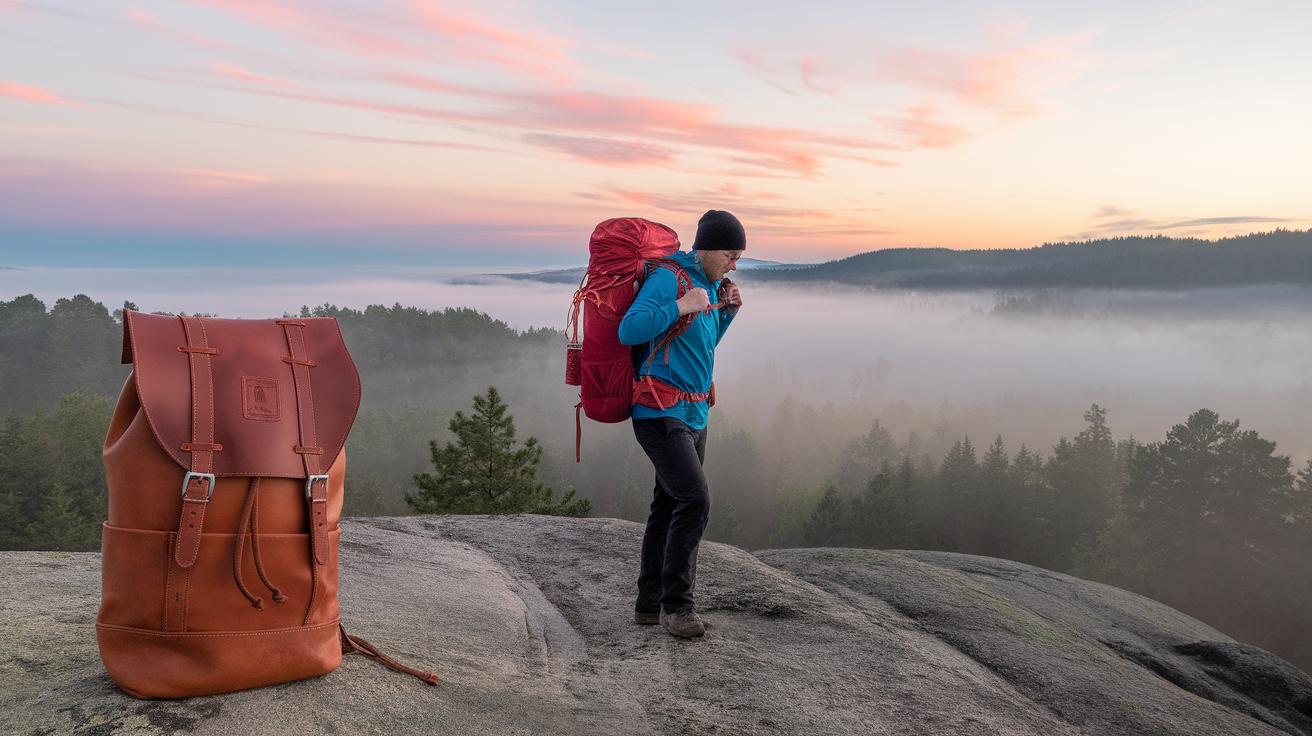Introduction
Choosing the right hiking boots outfit influences your comfort and style on the trail. Hiking boots protect your feet and ankles while offering support across rough terrain. An outfit that embraces both comfort and flair helps you enjoy your outdoor adventures without compromising your look. You deserve footwear and clothing designed for long walks but tailored to your personal style.
This guide will help you select hiking boots and matching outfit pieces that keep you supported and comfortable over uneven ground. You will find practical tips for combining weather-resistant materials with designs that suit your taste. Read on to learn how to achieve the ideal hiking boots outfit that offers functionality alongside an appealing and confident appearance.
Choosing the Right Hiking Boots
You need hiking boots that protect your feet on rough trails. Look for soles designed to handle different kinds of terrain. Deep, firm treads help keep your footing stable on mud, rocks, and loose dirt. A sole that grips well reduces the chance of slipping and falling.
Think about boots with high ankle support. This feature stabilizes your ankles and lowers the risk of sprains. Uneven ground challenges your balance, so extra support protects you from twists and injuries.
Waterproofing is a key feature. Boots with waterproof membranes keep your feet dry during rain or when crossing streams. Wet boots lead to discomfort and blisters, which can cut your hike short.
The materials used also affect comfort. Look for durable fabrics, padding where it counts, and boots that breathe well to keep your feet comfortable. The right boots will reduce fatigue and make your hike more enjoyable.
Ankle Support and Stability
Good ankle support helps prevent injuries on uneven trails. Boots with firm collars hold your ankle steady as you walk over rocks or roots. This support lowers the chance of your ankle rolling or twisting.
Without enough stability, you risk spraining your ankle, which can stop your hike and cause long-term harm. Higher-cut boots provide this crucial safeguard by wrapping around your ankle tightly.
Support also improves your confidence. When you know your ankles are protected, you can focus on pace and footing. This lets you tackle more challenging routes safely and comfortably.
Tread and Traction Importance
The tread on your hiking boots plays a big role in keeping you safe outdoors. Patterns with sharp, deep lugs improve grip on slippery or uneven ground. They dig into dirt, rocks, or mud to stop slips before they happen.
Good traction means you use less energy adjusting your steps to avoid falls. This helps you hike longer without tiring. Boots made for wet or icy trails often feature rubber compounds that stay sticky in low temperatures.
When choosing boots, examine the sole carefully. Ask yourself if the tread suits the conditions you expect. Will it handle wet rocks? Loose gravel? Choosing tread designed for your environment pays off in stability and safety.
Materials that Boost Comfort and Performance
Choosing the right materials for hiking boots makes a big difference in how your feet feel on the trail. Leather is known for its durability and ability to mold to your foot over time, creating a custom fit. It also offers good protection against rough terrain. Synthetic fabrics, like nylon and polyester, tend to be lighter and often dry faster when wet. They usually breathe better, helping your feet stay cool during long hikes.
Waterproof membranes play a key role in keeping your feet dry. These layers prevent water from getting in while allowing sweat to escape. Staying dry helps avoid blisters and discomfort, especially on wet or muddy trails. When materials work together—strong leather, breathable synthetics, and a waterproof layer—they provide balance. That blend supports your feet without weighing you down or causing overheating.
What combination will fit your hiking style best? Consider where you hike and how long you spend outdoors when picking materials for your boots. Comfort and performance come from how well these materials protect and support your feet throughout your adventure.
Choosing Between Leather and Synthetic
Leather boots often last longer because of their strong natural fibers. They protect well against scrapes and offer good ankle support. However, leather takes more time to dry and can feel heavier on your feet. If you hike in wet conditions, this could slow you down.
Synthetic boots feel lighter and dry faster after rain or crossing streams. They also allow better airflow, which means your feet stay cooler during hot weather. However, synthetic materials might wear out sooner and give less support over time compared to leather.
Think about your typical hiking trips. Will you carry heavy loads where durability matters more? Or do you prefer quicker drying materials for warm, wet climates? Both types have clear advantages, and your choice affects how comfortable your boots will be on different trails.
Waterproofing Benefits
Waterproof layers in hiking boots block rain, puddles, and mud from soaking your feet. Keeping your feet dry prevents coldness and wetness that cause blisters and sores. Dry feet help you stay focused and energized on the trail.
Materials like Gore-Tex and other waterproof membranes stop moisture from entering while allowing sweat to escape. This breathability is key to avoiding sweaty, uncomfortable feet that can lead to slipping inside your boots. The barrier between your skin and the outdoors helps maintain balance between dryness and ventilation.
Consider how often you hike in rainy or wet environments. If you hike in dry places, waterproof boots might feel hotter and less breathable. Yet, for wet trails, this feature protects your comfort and foot health, making your hike safer and more enjoyable.
Selecting Hiking Socks for Added Comfort
Your hiking boots provide support and protection, but choosing the right socks plays a key role in comfort. Socks act as a barrier between your feet and the boots, reducing friction that causes blisters. When you hike for hours, your feet sweat. Socks made from moisture-wicking materials pull sweat away from your skin, keeping your feet dry. Dry feet are less likely to develop blisters or feel cold on chilly days.
Cushioning in socks adds another layer of comfort. Padding protects pressure points like heels and the balls of your feet, which take the most impact while walking. Well-cushioned socks can absorb shock and reduce foot fatigue, helping you hike further without discomfort. Socks that fit properly prevent bunching and slipping inside boots, which also lowers blister risk. Have you ever wondered why your feet hurt after a short hike? The wrong socks could be the reason. Investing time in picking the right ones will improve your hiking experience significantly.
Moisture Control
Sweat collects quickly inside hiking boots as your activity level rises. If moisture stays trapped near your skin, it softens your skin and leads to blisters. Socks made from synthetic fibers like polyester or merino wool wick sweat away and dry fast. When your feet stay dry, you feel cooler and more comfortable on the trail. Some socks have mesh panels specifically placed to enhance breathability. Would you rather deal with wet, sore feet or dry, blister-free ones? Choosing moisture-managing socks helps you avoid common foot problems associated with long hikes.
Padding and Fit
Cushioned socks provide extra padding where your feet need it most during hiking. The heels, arches, and toes often endure repeated pressure and impact. Socks with targeted padding can reduce discomfort and protect the skin from rubbing directly against your boots. This protection helps prevent blisters and calluses. A good fit keeps the sock snug but not tight, stopping excess fabric from bunching up. Pay attention to sock length too—higher socks can protect your lower legs against scratches from brush. What kind of padding feels best on your feet? Testing different sock thicknesses can help you find your ideal comfort level on the trail.
Outfit Basics for Different Weather Conditions
Choosing the right hiking outfit means matching your gear to the weather you expect. Layering helps you adjust easily when temperatures change. Breathable fabrics keep sweat away from your skin, stopping chills and discomfort. Think about how much protection you need from wind, sun, or rain before you pack.
When it’s cold, add layers that trap heat but still allow air to circulate. In warmer weather, pick lightweight clothes that let heat escape. You can mix and match layers to fit your activity level and the environment. For example, a moisture-wicking base layer with a fleece or softshell jacket can work across various climates.
Also, pick clothes that protect against weather elements. Clothes with built-in UV protection shield you from strong sun rays, while waterproof or water-resistant materials keep you dry during rain. Think, “Does this keep me safe and comfortable all day?” This approach keeps your hiking boots outfit practical and ready for whatever nature throws at you.
Layer for Temperature Changes
Layering your clothes works by trapping or releasing heat when you need it. Start with a base layer that wicks moisture to keep your skin dry. Add a middle layer for insulation, like a fleece or lightweight down, which holds warmth. Top off with a shell layer that shields you from wind and water without locking in sweat.
This system lets you add or remove pieces quickly as the weather changes during your hike. You stay warm when the temperature drops and cool down when you exert energy. Have you ever felt too hot and sticky on a trail? Layering fixes that by letting you control your comfort through simple outfit changes.
Choose each layer with breathability and fit in mind. Clothes that are too tight prevent airflow, while loose layers trap warmth better. When you practice layering, your hiking boots outfit becomes flexible and ready for sudden temperature swings.
Sun and Rain Protection
Protecting your skin from sun and rain helps you stay comfortable longer on the trail. Look for hiking clothes with built-in UV protection, especially if you hike in open, sunny areas. These clothes reduce the risk of sunburn without needing constant sunscreen reapplication.
For rainy conditions, pick gear made from water-resistant or waterproof materials. Jackets with sealed seams and breathable membranes keep water out but allow sweat to escape. Avoid heavy rain gear that traps heat, as it can make you overheat and sweat excessively.
Consider accessories like wide-brim hats or caps to protect your face and neck from the sun. Waterproof gaiters help keep your boots dry and stop mud or water from getting inside. How does your current hiking outfit hold up against sun and rain? Making these choices ensures your comfort and safety during your hike.
Designing a Stylish Yet Practical Hiking Outfit
Choosing the right hiking outfit means focusing on both function and how you look. Start by picking clothes that fit well without restricting movement. Avoid clothes that are too tight or too loose. Think about fabric choices that offer breathability and moisture-wicking to keep you dry during your hike.
Consider simple designs that allow layers underneath, and opt for streamlined cuts that won’t snag on branches or gear. When selecting fits, balance comfort with a silhouette that feels good to you. Are your pants roomy enough for movement but still neat? Does your top allow air circulation while fitting your style?
Consider the trail’s demands but also your personal style. Bright colors can add flair, but neutral tones often match well with gear and carry less dirt visibility. You can make easy upgrades by choosing versatile items that work on and off the trail, such as a fitted fleece or a pair of rugged yet stylish hiking pants.
Color Choices and Coordination
Colors can change how your outfit works on the trail. Earth tones like greens, browns, and grays blend well with nature and hide dirt effectively. If you prefer brighter colors, pick shades that complement the outdoors, such as deep oranges, blues, or reds. These colors boost visibility for safety and add a pop of personality.
Pair colors thoughtfully by choosing one main shade and adding two or three accent colors. For example, navy pants with an olive shirt and a rust-colored jacket can look sharp without clashing. Try matching your boots with your outfit’s tone to create a cohesive look. Have you tried layering pieces in varying colors to highlight your hiking boots?
Accessorizing for Flair and Utility
Accessories add both style and function to your hiking outfit. A well-chosen hat protects you from sun and rain, while sunglasses shield your eyes. Choose items in materials that dry quickly and feel good in different weather.
A bandana or neck gaiter can add a splash of color and keep sweat or dust at bay. Consider a sleek, lightweight backpack with organized compartments that looks good and carries essentials. Small touches like colorful shoelaces or a patterned wool sock can personalize your boots without losing practicality.
Ask yourself which accessories make your hike easier and more enjoyable while reflecting your personal flair. Can you find gear that supports your trail needs and enhances your look at the same time?
Incorporating Modern Trends in Hiking Fashion
What Is Gorpcore
You might have noticed people wearing hiking boots with urban clothes. This is part of the gorpcore trend. Gorpcore mixes outdoor gear with everyday street style. The term comes from “gorp,” a hiker’s snack of nuts and raisins, symbolizing nature and adventure. Hiking boots appear in this look because they combine toughness with a unique style that fits both trails and city sidewalks.
Gorpcore values practical pieces that work outdoors but also turn heads in town. You’ll see waterproof jackets, cargo pants, fleece layers, and hiking boots worn as fashion statements. This trend honors function but doesn’t give up on eye-catching details. It asks you to think about how your hiking boots do more than protect your feet—they add character to your outfit too.
Balancing Trend and Function
How do you follow the gorpcore trend without losing comfort? Choose hiking boots that fit well and support your feet. Look for soles with good grip and boots made from durable materials. You can match these with modern touches like tapered cargo pants or a simple, bright fleece. These pieces keep you safe and stylish.
Keep your layers light but protective. Pick breathable fabrics so you don’t overheat. Try mixing colors that suit both nature and streetwear to avoid clashing. Ask yourself if your outfit can handle a hike or just a walk around town. This clarity helps you stay prepared. With the right choices, you stay true to the trend while enjoying every step comfortably and safely.
Maintaining Your Hiking Boots and Outfit
Proper care keeps your hiking boots and clothes working well for many adventures. Neglecting maintenance can cause early wear and even decrease comfort on the trail. You want your gear to perform and look good over time.
Regular cleaning removes dirt and grime that wear down materials. Drying boots properly stops mold and cracking. For clothes, using the right wash settings preserves fabric strength and fit. How often have you washed your hiking gear or checked your boots for damage?
Small habits make a big difference. A good routine protects your investment and helps you avoid discomfort during hikes. Caring for your hiking outfit is part of smart trail preparation.
Cleaning and Drying Boots
Remove mud and dirt after each hike using a soft brush or damp cloth. Avoid harsh chemicals that damage leather or waterproof coatings. Use water and a gentle cleaner made for boots when needed.
Dry boots at room temperature, away from direct heat like radiators or sunlight. Heat dries out leather and can make soles crack. Stuff boots with newspaper to soak up moisture faster without stretching the shape.
Check laces and soles for wear during cleaning. Replacing worn parts keeps boots supportive and safe. Taking time to care for your boots extends their life and keeps you comfortable on the trail.
Storing and Washing Hiking Clothes
Wash hiking clothes based on fabric care labels. Use cold water and mild detergent to stop fading and shrinking. Avoid fabric softeners, which block moisture-wicking properties and reduce breathability.
Turn clothes inside out for washing to protect colors and prints. Wash technical layers separately from heavy fabrics like jeans that cause friction damage.
Store clothes in a dry, ventilated space to prevent mildew. Hanging items like jackets retains shape, while folding baselayers saves space. Regularly check clothes for tears or stretched seams and repair them quickly to maintain performance.
Packing Essentials for a Hiking Trip
Packing right can change your entire hiking experience. Your boots and outfit set the foundation, but what you bring along completes your readiness. When selecting items, think about safety, comfort, and convenience throughout your journey.
Water always deserves priority. Carry enough to stay hydrated, considering your trail’s length and climate. A compact first aid kit keeps you prepared for minor injuries. Include medical tape, bandages, and antiseptic wipes tailored to your needs.
Snacks rich in protein and carbs provide steady energy. Choose items that won’t spoil or crush inside your pack. Don’t forget a map or GPS device to stay on course. A lightweight headlamp adds security if you hike near dusk or in unpredictable weather.
How do you balance packing light while preparing for surprises? Think about the terrain and weather forecast to fine-tune your list. A multi-tool offers solutions for unexpected fixes. All these details enhance both your comfort and safety without weighing you down.
Foot Care Items
Your feet carry you through every step. Bring extra socks to swap out damp pairs that cause blisters. Wool or synthetic materials work best because they dry quickly and manage sweat. Avoid cotton socks for hiking.
Include blister treatment patches or moleskin for hotspots that develop along trails. Foot powder helps reduce moisture and prevents chafing during long walks. You might also want anti-bacterial wipes to clean feet before changing socks.
Have you noticed how small discomforts can ruin a hike? Preparing your feet with care items lets you address issues early. Keeping your boots dry and your feet fresh will help maintain comfort throughout your trip.
Layering Extras
Weather can shift fast, especially in mountains or forested trails. Bring layers to adjust your outfit as temperatures drop or rise. A lightweight fleece or insulated jacket adds warmth without bulk.
Carry a breathable rain shell to stay dry, even if the forecast looks clear. Thin gloves and a hat protect against cold winds once elevation increases. Base layers made from moisture-wicking fabrics keep sweat from soaking your skin.
Do you plan for chilly mornings or unexpected rain? Keeping extra layers accessible helps meet changing conditions without overpacking. Think about garments that pack small and serve multiple functions. This flexibility boosts comfort while maintaining your outfit’s practical style.
Customizing Your Hiking Boots for Better Fit
Finding hiking boots that fit perfectly right away can be a challenge. Customizing your boots improves comfort and helps prevent blisters or soreness during long hikes.
One common way to adjust fit is by using aftermarket insoles. These insoles provide extra arch support and better cushioning that standard insoles often lack. They fill extra space inside the boot, reducing foot movement and fatigue after hours on the trail.
Lacing techniques also influence how snug and comfortable your boots feel. By experimenting with different lacing methods, you can ease pressure on sensitive spots and avoid heel slippage.
Finally, adjusting the ankle area by tightening or loosening the collar or using padding can prevent rubbing and enhance stability. Each small tweak adds up to make your boots feel like they were designed just for you.
Using Insoles for Support
Insoles add important support where your feet need it most. If your boots feel too flat or don’t hold your arches well, insoles can fill that gap and redistribute pressure evenly.
Look for insoles designed for hiking, which often have firmer arch support and extra cushioning. They help reduce foot fatigue by absorbing shock on rough terrain.
Try replacing factory insoles even if the original ones look fine. You might be surprised how much difference a supportive insole makes during a heavy day of walking.
Think about how your feet feel after a few miles—could more support improve your endurance?
Lacing Techniques for Comfort
The way you lace your boots can change fit and feel dramatically. If you experience tight spots or slipping heels, changing your lacing pattern might fix these issues without buying new boots.
For example, skip lacing the top eyelets to relieve pressure on the ankle or use “heel lock” lacing to prevent your heel from sliding forward. Another method is ladder lacing to evenly distribute tension across the foot.
Try different techniques on short walks to find what works best for your foot shape and the fit of your boots.
Have you tried adjusting your laces to fix discomfort instead of just tightening or loosening uniformly?
Planning for Your Next Hiking Adventure
Before packing, spend time researching your trail. Is the terrain rocky, muddy, or smooth? Rocky trails demand sturdy boots with strong ankle support to avoid injuries. Muddy paths call for waterproof boots and moisture-wicking socks to keep your feet dry. If your hike covers smooth or packed dirt trails, lighter boots with good grip might suffice.
Consider how long your hike will last and if you’ll face steep climbs. These factors affect your choice of clothing and gear, including layers and footwear. Ask yourself what kinds of breaks and terrain changes you will encounter so you can plan comfort without sacrificing style.
Assessing Trail Conditions
Look for recent trail reviews or check local hiking forums. They often share important details like trail difficulty and weather effects. Dry, dusty trails might require goggles or a bandana, while wet areas need waterproof materials everywhere, including your boots.
Trail conditions can affect how you move and what gear you need. For example, uneven rocky paths mean your boots should offer extra traction and stability. Soft forest ground might allow for lighter shoes, which are easier to pair with stylish outdoor attire without bulk.
Adjusting for Season and Climate
Plan your outfit based on the temperatures and weather patterns for your hike day. Warm summer hikes may work well with breathable socks and lighter boots. Cold or wet weather calls for insulated and waterproof boots plus thermal layers to protect you.
Think about how your boots and clothing handle moisture and breathability. Will you face rain, snow, or hot sun? Your outfit must keep your feet dry and comfortable to avoid blisters and fatigue. Choose colors and fabrics that fit both the climate and your personal style, like earth tones for fall hikes or brighter accents for spring.
Conclusions
Comfort and flair can come together easily with thoughtful choices. Prioritize hiking boots with ankle support, grip, and breathability to prevent blisters and maintain foot health. Paired with moisture-wicking socks and weather-suitable attire, your outfit will handle different trail conditions well. Styling tips help keep this combination fashionable without sacrificing performance features needed for hiking.
Investing time in planning your hiking outfit pays off in better experiences outdoors. How you dress impacts your enjoyment and safety on hikes. Scheduling your boots and clothing to blend practical elements with personal style honors both function and individuality. You can step out confidently knowing your feet and look are well cared for during every journey.





